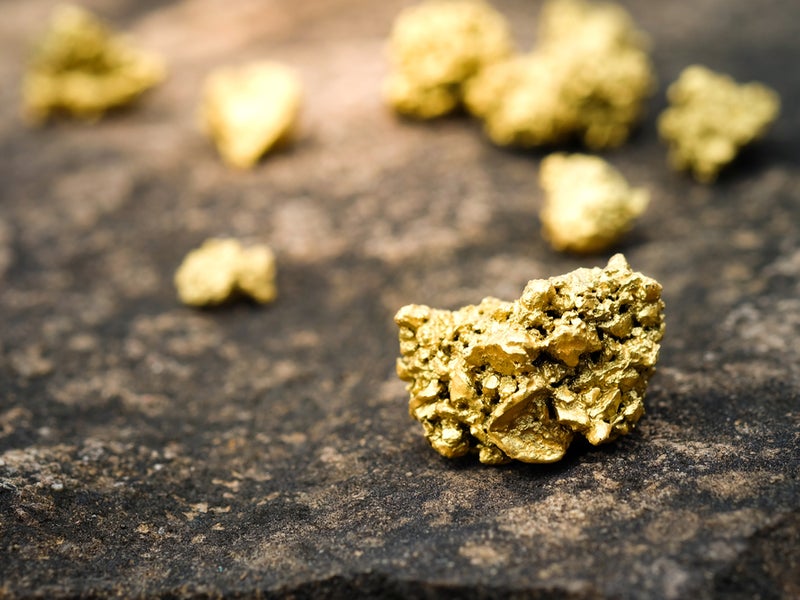The Öksüt project is a high-sulphidation epithermal gold mine in the Central Anatolia region of Turkey.
The mine is owned and operated by Öksüt Madencilik Sanayi ve Ticaret (OMAS), a wholly owned subsidiary of Centerra Gold. Centerra obtained a 100% interest in the project by purchasing the remaining 30% interest from Stratex in 2013.
The $221m project is jointly financed by the European Bank for Reconstruction and Development (EBRD) and UniCredit. It received a $75m loan from EBRD as part of a $150m project financing facility with UniCredit.
The project was discovered in 2007 and the construction at the mine began in March 2018, following the completion of the feasibility study in July 2015.
The first gold was poured from the mine in January 2020 and the project achieved commercial production in May 2020.
Öksüt gold project location
The Öksüt gold mine is located 48km south of Kayseri and 295km south-east of Ankara, in the Develi district in the rural area of Central Anatolia.
The project site is situated at an elevation of 1,800m in the Develi Mountains on a north-south trending topographic high. It is accessible via Ankara and Kayseri international airports, which are serviced by international and domestic airlines.
Geology and mineralisation of the Öksüt gold project
The Öksüt mine is situated within the Tethyan Metallogenic Belt, which extends from south-eastern Europe across Turkey, the Caucasus and Pakistan.
The closure of the Tethyan Ocean due to the collision between the Arabian Plate and the Eurasian Plate in the late Cretaceous period led to magmatic activity and related ore-forming processes in the region.
Gold mineralisation in Öksüt is present within the stratovolcano Develidağ Volcanic Complex, situated along the Central Anatolian Fault Zone. The volcanic complex comprises lava flows, pyroclastic rocks, and Miocene basaltic-andesitic volcanic domes.
Gold occurrence in Öksüt is mostly in the Keltepe Deposit, with the distribution of the alteration assemblages and high-grade gold zones. The highest gold grade is found in the central massive silica breccia.
Exploration activities
Other exploration targets at Öksüt include Büyüktepe, Boztepe, Boztepe W, Keltepe E, Keltepe NW, Tombak and Yelibelen.
Condemnation drilling was conducted at the waste rock dump area of Keltepe E during the feasibility study.
Drilling activities have targeted oxide gold potential around the known deposits during the last few years. The future drilling programme will target Keltepe North and also test the presence of oxide gold in Boztepe, Büyüktep, Keltepe NW and Yelibelen prospects.
Öksüt mine reserves
The project is estimated to contain proven and probable reserves of 29.36 million tonnes (Mt) graded at 1.35g/t for 1.27 million ounces (Moz) of gold as of December 2019. It is anticipated to produce 80,000oz to 100,000oz of gold in 2020.
Mining method at Öksüt gold project
The Öksüt project includes simultaneous mining of the primary Keltepe pit and the smaller Güneytepe pit with plans to mine 1.3Moz of gold from the two pits over an expected mine life of eight years.
The development of the Keltepe pit is being undertaken in three cutbacks for better stripping requirements and to extract higher grade material during the initial years of the mine while the Güneytepe pit is to be developed in two cutbacks.
The mine employs conventional truck and excavator open-pit mining method. It uses drilling and blasting following which the material is loaded and hauled for processing.
The ore undergoes crushing in jaw crushers and then in cone crushers and the extracted ore from the open pits is sieved and scaled down to attain appropriate dimensions. It will then pass through heap leaching and carbon-in-column processes to recover gold in the form of dore bars. While the higher grade material is not stockpiled, the lower grade ore is stockpiled to be processed at the end of the mine life.
The mining activities are being carried out by a mining contractor with a fleet comprising 36t trucks and CAT 374, CAT 349, and CAT 330 excavators.
Processing at Öksüt
The run-of-mine ore is dumped on the stationary grizzly and then removed from the dump hopper to be fed into the jaw crusher for reducing the rock size to -150mm. The crushed ore is then transported to the secondary crushing circuit by a conveyor belt.
The product from the primary crushing circuit is fed into a double-deck screen which in turn feeds the cone crusher. Quicklime is added to the crushing circuit product which is carried by a conveyor to a radial stacker to form a 10,000t capacity stockpile.
Trucks are used to carry the crushed ore to the heap leach pad, which is being developed in three phases to accommodate 40Mt of crushed ore.
The ore undergoes heap leaching and the pregnant leach solution (PLS) flows through a network of several sets of pipes at the base of the heap to the PLS pond. It is then pumped to the adsorption-desorption-regeneration (ADR) plant for recovering precious metals.
Contractors involved in the project
Dorce was contracted to construct the administration buildings at the mine site, while Birikim was awarded a contract to undertake construction related to primary and secondary crusher foundations, stacker steelwork, and crusher civil work.
BTE completed an electrical powerline to the sub-station of the mine. Other contractors serving the gold project include GES, Ciftay, Yesti, CH Engineering, and ACD.






